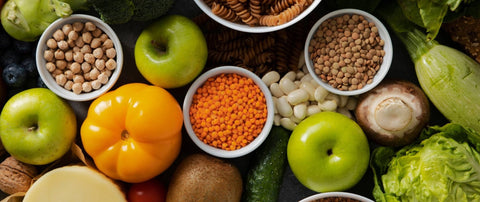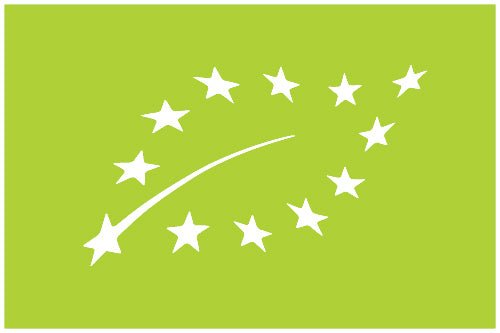Almost one in three adults suffers from high blood pressure. In the under 65 age group, men clearly lead the statistics, although women catch up as they get older. From the age of 65, two thirds of both sexes have been diagnosed with high blood pressure by a doctor. This demonstrates that prevention for a balanced blood pressure affects us all. Learn here which factors favour high blood pressure and what you can do to keep your blood pressure in balance.
Contents
How your body adjusts your blood pressureThe biggest risk factors for high blood pressure
Obesity
Nutrition
Alcohol, Smoking and oxidative stress
Mental stress
Lack of exercise
The role of genetics - is everything predetermined?
Sources
Too High or Too Low - What's the Right Blood Pressure?
High blood pressure or hypertension is defined as a value of over 140/90 mmHg on repeated measurements. Too high blood pressure means that the heart is pumping harder and the pressure on the blood vessel walls is greater. On the one hand, this is a heavy burden on heart and blood vessels, on the other hand, it is a risk factor that can result in cardiovascular diseases at a later stage. These include cerebral infarction, cerebral haemorrhage, thrombosis and varicose veins. Cardiovascular diseases are among the most common causes of death in Western Europe. Elevated blood pressure can also be an indication of kidney disease or result in kidney disease. Increased pressure in the blood vessels can damage the nephrons, the sensitive filter units of the kidneys.5 If these no longer do their job properly, the fluid content in the blood increases, which in turn leads to an increase in pressure in the blood vessels.
However, low blood pressure can also be a cause for concern, as it can have various causes. If the blood pressure is routinely below 90/60 mmHg, this is considered low blood pressure, also known as hypotension. In this case, doctors first try to determine whether there is a problem with the thyroid gland or a heart defect. Anaemia can also lead to permanently low blood pressure. Symptoms such as dizziness, headaches, cold feet and hands can be indications of low blood pressure.
How your body adjusts your blood pressure
Short-term fluctuations in blood pressure are completely normal and even important for our health. Our blood pressure rises during periods of exertion and high stress, for example when we exercise. During these phases, the muscles need more oxygen, which means that more blood has to be pumped through the body. Blood pressure also rises when we are anxious or stressed, as the body prepares itself for an upcoming strain, so to speak. When we are lying down, resting or even sleeping, the blood does not have to "fight" gravity to get from the legs to the heart. All blood vessels are level with the heart when lying down. Therefore, a lower blood pressure is sufficient to keep our body well supplied.
By changing the heart rate or adapting the width of blood vessels, blood pressure can be increased and lowered according to our needs.
The biggest risk factors for high blood pressure
As blood pressure is a complex system that depends on many factors, it is difficult to say exactly why someone suffers from high blood pressure. However, researchers have been able to identify some risk factors over the years. Patients with mild hypertension are usually advised to first optimise the following areas of their lifestyle before switching to medication.
Obesity
According to the World Health Organisation (WHO), 2.5 billion people were overweight in 2022, 890 million of whom were severely overweight. The number of overweight adults has doubled since 1990, while the number of overweight adolescents has quadrupled.4 Obesity is defined as a body fat percentage that is more than 20% above a person's ideal weight or a body mass index (BMI) of over 30. This excess fat is not only deposited in connective tissue, but also around organs such as the liver and kidneys and in the blood vessels. This leads to reduced function of these organs and increased pressure in constricted blood vessels.6

Nutrition
A balanced and healthy diet is essential to ensure the health of our body. If certain nutrients are lacking, this has a long-term effect on physical functions. Blood pressure is also affected. Potassium, calcium and magnesium are particularly important to ensure that it can be regulated as usual. Increased salt intake is often mentioned in connection with high blood pressure. The average amount of salt we consume is estimated at 9-12g per day. However, the WHO recommendation is no more than 5g per day. However, it's not just about how much salt you add to your food. Especially convenience and highly processed foods often have a hidden, very high salt content. It is therefore advisable to reduce the amount of salt in your diet, while at the same time increasing your intake of minerals such as potassium in order to lower your blood pressure in the long term.7 Kale, dried apricots, beans and bananas, for example, are particularly rich in potassium.
Of course, reducing one ingredient in your diet alone is not enough. A balanced diet that provides you with all the important macronutrients, vitamins and minerals is the best basis for a healthy body and a healthy mind.
Alcohol, smoking and oxidative stress
If you don't already have enough reasons to quit smoking or reduce your alcohol consumption, here's one more. Both vices are considered strong risk factors for high blood pressure, cardiovascular disease and heart attacks. Atherosclerosis, the narrowing and hardening of blood vessels, is also favoured by smoking.8 High blood pressure is clearly linked to smoking and alcohol consumption, even if the exact causal link is still uncertain. Effects on inflammation levels, weakening and long-term damage to the kidneys and an acceleration of cell aging due to oxidative stress are suspected triggers.9
However, oxidative stress is not only increased by alcohol and smoking, but also depends on environmental factors. UV radiation or environmental toxins to which we are exposed on a daily basis cause oxidative stress in the body, which accelerates cell aging. Antioxidants come to our aid here, including secondary plant substances such as polyphenols, which serve to protect plants from pests and UV radiation. They can neutralise the free radicals that attack the cells and cause oxidative stress. One particularly powerful antioxidant is OPC (oligomeric proanthocyanidins), which is found in the seeds of grapes. You can take it as an extract in capsule form, for example. Nuts and various vegetables also contain many antioxidants. A balanced diet that contains many of these foods is a good prerequisite for balanced blood pressure.

Advertisement
Mental stress
For our Stone Age ancestors, stress was the physical reaction to approaching or imminent danger. A predator nearby, a threatening noise or a fire triggered certain mechanisms. The body releases stress hormones, which increase blood pressure and shorten reaction times. In truly life-threatening situations, this can be life-saving. In today's society, however, life and death situations are less common in everyday life. Most people experience stress from work or social life. Pressure to perform, lack of time, financial pressure, fear of failure, sleep deprivation or sensory overload are just a few examples of the different types of stress to which modern people are exposed. Of course, high blood pressure in stressful situations is a temporary condition. This means that when the stress subsides, blood pressure drops again. However, if someone is frequently or even chronically under stress, this poses a major health problem. The permanent strain on the blood vessels and organs can lead to serious damage, such as cardiovascular diseases, heart attacks or kidney damage. It is therefore advisable to reduce or avoid stress wherever possible. Exercises such as autogenic training or meditation can improve the way you deal with such stressful situations.
Lack of exercise
Many professions nowadays are carried out in a sitting position. Almost a fifth of adults spend at least eight hours a day sitting down. This is particularly the case for younger age groups.
Sitting for hours on end is far from good for posture, intervertebral discs and muscles. Complaints ranging from back pain to varicose veins, muscle tension and even muscle breakdown can be the result of too much sitting.11 Although exercise and exertion naturally cause blood pressure to rise at first, they have the opposite effect in the long term. After intensive training, a drop in blood pressure can be observed that lasts for a few hours after the training session.12 Even with smaller exercise sessions spread throughout the day, blood pressure can be lowered and the risk of serious late effects reduced.
The role of genetics - is everything predetermined?
Even though analyses of family trees suggest that high blood pressure is hereditary, it has not yet been possible to identify a gene that is solely responsible for high blood pressure. It is more likely that the cause is a combination of genetic factors, environmental influences and personal habits.3 But even if it is a complex interplay of different influences, it can be clearly observed that even individual adjustments in lifestyle, such as salt reduction, a balanced diet, more frequent exercise or abstaining from alcohol and smoking, have the effect of lowering blood pressure. So even if you have a family history of high blood pressure, you don't necessarily have to accept it as your fate. You can take your health into your own hands and declare war on high blood pressure.
To avoid high blood pressure, it's worth taking a critical look at your own everyday life. Do you eat a balanced and healthy diet or do you eat a lot of sugary or salty foods? Do you sit a lot and get little to no exercise as a balance? Do you smoke or drink alcohol frequently? Are you often under stress at work or in your private life? If you have answered "yes" to one or more of these questions, it is advisable to keep an eye on your blood pressure and adjust the relevant aspects of your daily life.
Sources:
- Neuhauser, Hannelore, Ronny Kuhnert, Sabine Born Journal of Health Monitoring · 2017 2(1) DOI 10.17886/RKI-GBE-2017-007 Robert Koch-Institut, Berlin. https://www.rki.de/DE/Content/Gesundheitsmonitoring/Gesundheitsberichterstattung/GBEDownloadsJ/FactSheets/JoHM_2017_01_gesundheitliche_lage3.pdf?__blob=publicationFile
- Statistisches Bundesamt, https://www.destatis.de/DE/Themen/Gesellschaft-Umwelt/Gesundheit/Todesursachen/_inhalt.html (abgerufen am 19.3.2024)
- Natekar A, Olds RL, Lau MW, Min K, Imoto K, Slavin TP. Elevated blood pressure: Our family's fault? The genetics of essential hypertension. World J Cardiol. 2014 May 26;6(5):327-37. doi: 10.4330/wjc.v6.i5.327. PMID: 24944762; PMCID: PMC4062117. https://www.ncbi.nlm.nih.gov/pmc/articles/PMC4062117/
- World Health Organization, “Obesity and Overweight”, https://www.who.int/news-room/fact-sheets/detail/obesity-and-overweight , abgerufen am 21.03.2024.
- De Bhailis ÁM, Kalra PA. Hypertension and the kidneys. Br J Hosp Med (Lond). 2022 May 2;83(5):1-11. doi: 10.12968/hmed.2021.0440. Epub 2022 May 27. PMID: 35653320. https://pubmed.ncbi.nlm.nih.gov/35653320/
- Jiang SZ, Lu W, Zong XF, Ruan HY, Liu Y. Obesity and hypertension. Exp Ther Med. 2016 Oct;12(4):2395-2399. doi: 10.3892/etm.2016.3667. Epub 2016 Sep 6. PMID: 27703502; PMCID: PMC5038894. https://www.ncbi.nlm.nih.gov/pmc/articles/PMC5038894/
- Rust P, Ekmekcioglu C. Impact of Salt Intake on the Pathogenesis and Treatment of Hypertension. Adv Exp Med Biol. 2017;956:61-84. doi: 10.1007/5584_2016_147. PMID: 27757935. https://pubmed.ncbi.nlm.nih.gov/27757935/
- Giebe S, Cockcroft N, Hewitt K, Brux M, Hofmann A, Morawietz H, Brunssen C. Cigarette smoke extract counteracts atheroprotective effects of high laminar flow on endothelial function. Redox Biol. 2017 Aug;12:776-786. doi: 10.1016/j.redox.2017.04.008. Epub 2017 Apr 7. PMID: 28432984; PMCID: PMC5397582. https://www.ncbi.nlm.nih.gov/pmc/articles/PMC5397582/
- Amponsah-Offeh M, Diaba-Nuhoho P, Speier S, Morawietz H. Oxidative Stress, Antioxidants and Hypertension. Antioxidants (Basel). 2023 Jan 27;12(2):281. doi: 10.3390/antiox12020281. PMID: 36829839; PMCID: PMC9952760. https://www.ncbi.nlm.nih.gov/pmc/articles/PMC9952760/
- Journal of Health Monitoring · 2022 7(3) DOI 10.25646/10294 Robert Koch-Institut, Berlin Kristin Manz, Olga M. Domanska, Ronny Kuhnert, Susanne Krug. https://www.rki.de/DE/Content/Gesundheitsmonitoring/Gesundheitsberichterstattung/GBEDownloadsJ/FactSheets/JoHM_2017_02_arbeitsbezogene_koerperliche_Aktivitaet.pdf?__blob=publicationFile#
- Kett AR, Milani TL, Sichting F. Sitting for Too Long, Moving Too Little: Regular Muscle Contractions Can Reduce Muscle Stiffness During Prolonged Periods of Chair-Sitting. Front Sports Act Living. 2021 Nov 3;3:760533. doi: 10.3389/fspor.2021.760533. PMID: 34805980; PMCID: PMC8595117. https://www.ncbi.nlm.nih.gov/pmc/articles/PMC8595117/
- Carpio-Rivera E, Moncada-Jiménez J, Salazar-Rojas W, Solera-Herrera A. Acute Effects of Exercise on Blood Pressure: A Meta-Analytic Investigation. Arq Bras Cardiol. 2016 May;106(5):422-33. doi: 10.5935/abc.20160064. Epub 2016 May 6. PMID: 27168471; PMCID: PMC4914008. https://www.ncbi.nlm.nih.gov/pmc/articles/PMC4914008/#r1




 DE-ÖKO-006
DE-ÖKO-006
